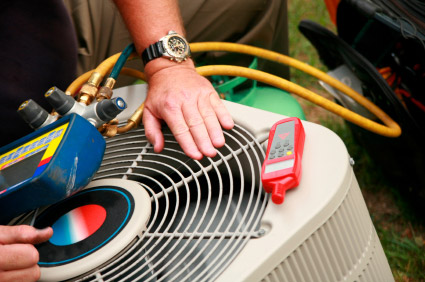 Your heating, ventilation, and air conditioning (HVAC) system is responsible for a lot of things in your home. It keeps your home warm in the fall and winter months, and cool in the spring and summer. Your HVAC system also keeps the quality of the air in your home where it should be so that you’re not breathing in dust, dirt and other contaminants all the time.
Your heating, ventilation, and air conditioning (HVAC) system is responsible for a lot of things in your home. It keeps your home warm in the fall and winter months, and cool in the spring and summer. Your HVAC system also keeps the quality of the air in your home where it should be so that you’re not breathing in dust, dirt and other contaminants all the time.
This powerful system keeps you comfortable all year long and it’s easy to forget it even exists. However, if your HVAC system were to break down on you in the middle of the blistering summer heat, you would notice very quickly. To keep your HVAC system in tip-top shape, it’s best to perform bi-annual maintenance on it just before the hot and cold seasons begin.
The best way to handle your bi-annual maintenance is to have a professional HVAC technician inspect your system and perform any work necessary, but, just in case you’re more of a DIYer, we’ve put together this checklist of tasks for your spring HVAC maintenance.
Unit Maintenance Checklist
- Clean the indoor coil.
- Check the furnace or air handler blower for proper operation and clean if necessary.
- Change your filters every 1-3 months depending on cleanliness.
- Check all electrical connections.
- Check the operation of the compressor and outdoor fan motor.
- Check the refrigerant levels. If levels are low, check for leaks, then refill the refrigerant.
- Check the drainage tube at the base of your air conditioning unit and ensure it is free from any blockage.
Energy Saving Checklist
- Check thermostat settings to make sure the system isn’t running when it’s not needed.
- Tighten all electrical connections because faulty electrical connections can be unsafe and reduce the life of major components.
- Lubricate all moving parts. Too much friction in motors can be harmful to the system and increase the amount of electricity it uses.
- Check and inspect the condensate drain in your central air conditioner, furnace and/or heat pump (when in cooling mode). A plugged drain can cause water damage in the house and affect indoor humidity levels.
- Clean evaporator and condenser air conditioning coils. Dirty coils reduce the system’s ability to cool your home and cause the system to run longer, increasing energy costs and reducing the life of the equipment.
- Check your central air conditioner’s refrigerant level and adjust if necessary. Too much or too little refrigerant will make your system less efficient increasing energy costs and reducing the life of the equipment.
- Clean and adjust blower components to provide proper system airflow for greater comfort levels. Airflow problems can reduce your system’s efficiency by up to 15 percent.
- Inspect, clean, or change air filters once a month in your central air conditioner, furnace, and/or heat pump. Your contractor can show you how to do this. A dirty filter can increase energy costs and damage your equipment, leading to early failure.
While performing these tasks doesn’t guarantee you won’t have a problem with your HVAC system, they will significantly decrease the risk of having major issues. If it sounds like more than you can handle on your own, call a professional HVAC technician. Mountain Heating and Cooling technicians are certified experts at handling any of your HVAC system needs! Schedule your HVAC maintenance online or over the phone today!

